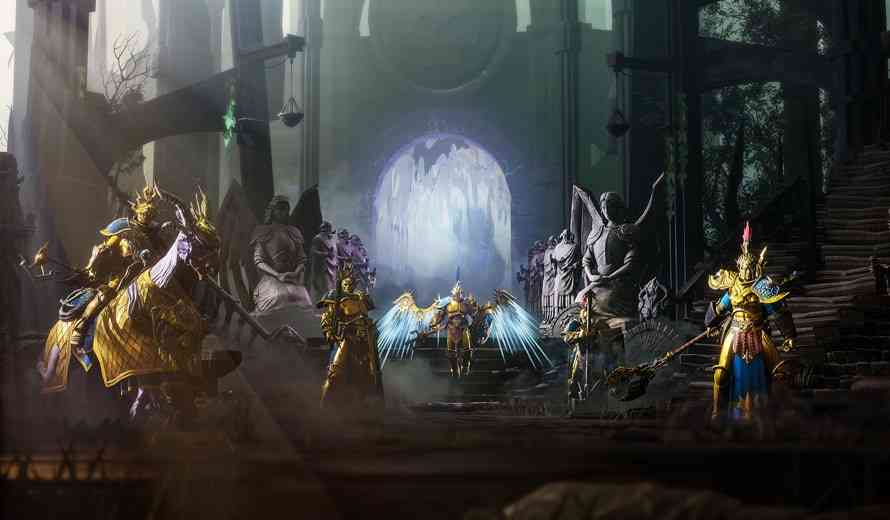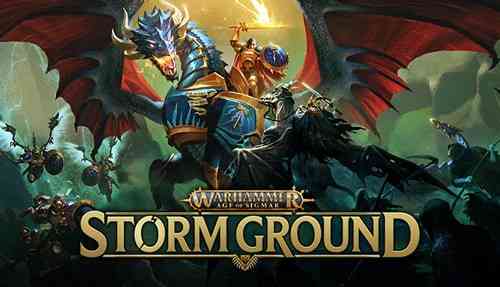Warhammer Age of Sigmar: Storm Ground Review
As anyone who’s even casually bumped up against the franchise knows, the world of Warhammer is almost incomprehensibly broad and deep and the Games Workshop has spawned or licensed dozens of video games based on its various properties and spinoffs. Warhammer Age of Sigmar: Storm Ground is the first turn-based strategy game based on the Age of Sigmar (formerly Warhammer Fantasy Battles) universe, and aims to please both diehard fans of the tabletop games as well as serve as an introduction and enticement for those who have not yet cleared off their dining room tables or started painting their miniature armies.
Storm Ground is set in the lore’s pivotal Age of Sigmar when the titular hero has returned to the Mortal Realms after a 500-year absence with his newly minted Stormcast Eternals to push back the forces and factions of Chaos and Death. With good and evil represented by both clearly delineated and ambiguous heroes and factions, the world of Age of Sigmar is fertile ground for epic storytelling and larger-than-life characters and both of these find their way into Storm Ground. Trying to wrap your head around Warhammer Age of Sigmar’s rich and complex lore is an intimidating proposition, but on the whole Storm Ground’s single-player campaign does a pretty good job of bringing both new players and those conversant with the story up to speed.

The tabletop game Age of Sigmar has well over two dozen distinct factions, grouped into the “super factions” of Order, Chaos, and Death. Storm Ground focuses on one representative faction from each: The Stormcast Eternals, The Maggotkin of Nurgle, and the Nighthaunt. Besides being fertile ground for an expanse of DLC and/or microtransactions down the line, the three playable factions in Storm Ground are all distinct and enjoyable to play. The Stormcast Eternals are the traditional melee and ranged weapon soldiers with a bit of magic tossed in; the Maggotkin focus on plague, poison, and biological weapons, and the Nighthaunt are ghosts, spirits, and wraiths. Like the best strategy games, Storm Ground does a good job of balancing each of its factions and moving the units around the hex-based battlefield, anticipating enemy moves and accomplishing objectives while also capturing treasure often has a chess-like feel, and sacrificing or losing a unit type was never an easy moment.
You’ve Got Options
As is so often the case with many recent games, Age of Sigmar: Storm Ground splices elements of rogue-lite gameplay and procedurally generated content into its single-player campaign, making the game much more replayable but sacrificing the potential for a more dramatically coherent narrative. Players select one of the three factions and begin a multi-mission run through a campaign of escalating difficulty, surviving multiple waves of enemies, capturing and holding map points, aiding, protecting, or eliminating specific characters, and picking up loot in the form of upgrades, weapons, or ability cards along the way that are used to build your warband. Main character death at any point means the end of a run, but treasure and upgrades and experience points persist and important units killed in one mission can be resurrected (at a cost) for use in subsequent missions. It’s disappointing, though I guess mechanically understandable, that although campaigns can be saved at any point, players cannot have multiple simultaneous saved campaigns between factions. Since maps are procedurally generated, multiple runs will have some minor variations but the objectives will remain the same each time.

As engaging as the single-player content is, the campaign is at least in part an extended training ground for the competitive multiplayer mode, which has an entirely separate character progression tree featuring literally hundreds of weapons, armor, character, and ability unlocks. It’s too soon to know what kind of metagame or strategic exploits will color the competitive mode down the line but I think the potential for long-term enjoyment is there. For many, one of the pleasures of the tabletop experience is painstakingly painting miniatures and this is mirrored in the ability to customize and digitally paint one’s army of units and heroes. It’s great fun but unfortunately, this isn’t part of the single-player campaign. There are also customizable skirmishes with AI, though only a couple of game modes against the computer. Still, they’re a quick way of testing out new units and practicing tactics.
Storm Ground’s maps are not sprawling, but rather intimate, complicated by barriers, elevation changes, and other tactical elements, and each campaign takes place in a series of visually diverse environments. Although not bleeding edge, Storm Ground’s colorful, cartoon fantasy art style does a great job of representing the distinct nature of each unit type at distance and the game’s particle effects and battle animations are effective. The dialog and storytelling are appropriately oversized and voiced with scenery-chewing vigor and a simultaneous sense of ironic humor and weighty portent, and the music is similarly epic though not too intrusive during battles. In general, the game’s combat is paced well and the matches move swiftly. There are still some bugs to be ferreted out and at least a couple of times in the campaign, the game failed to recognize the end of a match and victory conditions, ruining what had been a successful run.

The devoted and opinionated Warhammer acolytes will no doubt weigh in on how faithfully Age of Sigmar: Storm Ground represents the tabletop experience and lore, both of which have expanded and diverged from the source with the blessings of Games Workshop. From the viewpoint of a casual but interested fan, Storm Ground is a success both as an enjoyable turn-based strategy rogue-lite game and as yet another product in the vast and varied Warhammer universe. Although it exists primarily as a training ground for multiplayer, the single-player campaign is worth playing, though it would have been even better with a true dramatic arc instead of the “infinitely replayable” roguelike runs. The three factions are a great place to start and whet the appetite for expansions and additional content.
*** A PC review code was provided by the publisher ***
The Good
- Enjoyable mix of strategy and rogue-lite progression
- Large and varied selection
- Oversize voice acting
- Effective visual design
The Bad
- Some progression-stopping bugs
- Single player campaign needs direction
- Some maps are a little lackluster

